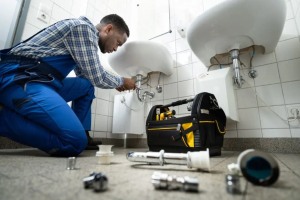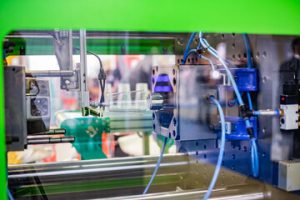Maintaining a beautiful and healthy yard is a year-round commitment. While many homeowners focus on spring and summer for lawn care and garden upgrades, the reality is that each season plays a vital role in the overall health and appearance of your landscape. Seasonal landscaping services are essential for protecting your yard from weather-related stress, encouraging strong growth, and ensuring consistent curb appeal throughout the year.
Whether you have a small garden or a sprawling lawn, investing in Landscape Contractors Honolulu HI can make a significant difference. From mulching and pruning to aeration and cleanup, here’s how tailored landscaping services throughout the year help you maintain a vibrant and functional outdoor space.

Spring Landscaping Services
Spring marks the beginning of the growing season, making it one of the most important times of the year for landscape maintenance. After months of winter dormancy, your yard needs a thorough clean-up and preparation for warmer weather and active growth.
Key services include:
- Spring Cleanup:
- Removing dead leaves, fallen branches, and other debris that have accumulated over winter helps clear the way for fresh growth. A clean yard also minimizes the risk of mold, pests, and disease.
- Soil Testing and Fertilization:
- Spring is a good time to evaluate soil health. Soil testing helps determine pH levels and nutrient content so that fertilization can be done appropriately to promote lush grass and plant development.
- Mulching:
- Applying mulch around trees, shrubs, and flower beds helps retain moisture, suppress weeds, and improve soil health. Fresh mulch also gives the landscape a neat and finished appearance.
- Lawn Aeration and Overseeding:
- Aerating the lawn loosens compacted soil, allowing air, water, and nutrients to reach the grassroots. Overseeding fills in bare patches and enhances grass density.
- Planting and Garden Design:
- Early spring is ideal for planting new trees, shrubs, and perennial flowers. Landscaping professionals can help design garden beds that suit your climate and personal preferences.
Summer Landscaping Services
During summer, plants are in full bloom, and the lawn is actively growing. While the yard may look its best, this season also comes with challenges like heat stress, drought, and increased weed and pest activity.
Key services include:
- Regular Lawn Mowing and Edging:
- Keeping the grass at an optimal height encourages healthy growth and prevents weeds from taking over. Edging provides clean lines and enhances the overall look of the yard.
- Water Management:
- Efficient irrigation is critical during the hotter months. Landscaping services may include adjusting sprinkler systems, installing drip irrigation, or recommending watering schedules that prevent overwatering or dehydration.
- Weed and Pest Control:
- Weeds and pests thrive in the summer heat. Targeted weed removal and safe pest control measures help protect your lawn and plants without harming the environment.
- Deadheading and Pruning:
- Removing spent flowers encourages new blooms in flowering plants. Summer is also a good time for selective pruning to shape shrubs and manage growth.
- Hardscape Maintenance:
- Walkways, patios, and retaining walls may need pressure washing or minor repairs to keep them safe and attractive throughout the season.
Fall Landscaping Services
Fall is the perfect season to prepare your yard for winter and ensure a strong comeback in the spring. This transitional period allows homeowners to address issues left over from summer while laying the groundwork for the colder months ahead.
Key services include:
- Leaf Removal and Debris Cleanup:
- Regular leaf removal is crucial for preventing suffocated grass, mold growth, and pests. Landscapers can collect and compost fallen leaves to keep the yard tidy and eco-friendly.
- Fertilizing for Winter:
- Applying a fall fertilizer supports root development and strengthens the grass for winter survival. This is often referred to as “winterizing” the lawn.
- Core Aeration:
- Like in spring, fall aeration helps reduce soil compaction and prepares the lawn for reseeding. This service enhances water and nutrient absorption heading into dormancy.
- Overseeding:
- Spreading new grass seed fills in worn areas and improves turf thickness. Fall overseeding gives the seeds time to establish before winter.
- Tree and Shrub Care:
- Trimming dead or overgrown branches prevents potential damage from snow and ice. Fall is also a good time to wrap or insulate vulnerable plants for protection.
Winter Landscaping Services
While winter may seem like a break from yard work, there are still important tasks that contribute to long-term landscape health and safety. Landscaping professionals can help protect plants, clear hazards, and plan for the upcoming seasons.
Key services include:
- Snow and Ice Management:
- For regions that experience snow, clearing driveways, walkways, and paths helps ensure safety and prevent ice damage to hardscape features.
- Winter Pruning:
- Certain trees and shrubs benefit from dormant pruning, which can improve structure and promote healthier spring growth. Landscapers know the right time and method to prune without harming the plants.
- Protecting Plants:
- Burlap wraps, mulch mounds, and other winterizing techniques help insulate delicate plants from freezing temperatures and windburn.
- Landscape Planning:
- Winter is a great time to assess your landscape’s overall design. Working with a landscaping expert during the off-season allows you to plan projects like new installations, garden layouts, or irrigation upgrades for the spring.
- Hardscape Inspections:
- Cold weather can cause cracks or wear in paved surfaces. Inspections during the winter help identify early signs of damage so they can be addressed before spring.
Benefits of Year-Round Landscaping Services
Using seasonal landscaping services brings more than just visual benefits. It contributes to the overall health, longevity, and value of your property. Here are a few advantages:
- Improved Curb Appeal: Consistent care keeps your yard looking fresh and well-maintained, which enhances the overall appearance of your home.
- Increased Property Value: A beautiful landscape is a key selling point and can significantly increase the resale value of your property.
- Healthier Plants and Lawn: Regular pruning, fertilization, and pest management promote strong, disease-resistant growth.
- Lower Long-Term Costs: Preventive maintenance reduces the risk of major repairs or replacements by catching problems early.
- Seasonal Safety: Removing snow, trimming branches, and managing leaves helps minimize slip hazards and property damage.
Caring for your landscape is a year-round responsibility, and seasonal landscaping services make it manageable and effective. By adapting your yard care routine to the changing seasons, you create a resilient, healthy outdoor environment that not only looks beautiful but also functions well throughout the year.
Whether you’re starting from scratch or maintaining an established yard, partnering with professionals who understand the needs of each season ensures your landscape remains vibrant and valuable in every month. With a thoughtful, seasonal approach, your yard can thrive regardless of weather conditions, giving you a space to enjoy and take pride in all year long.








